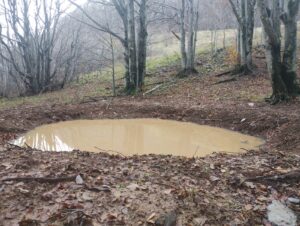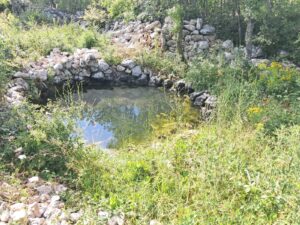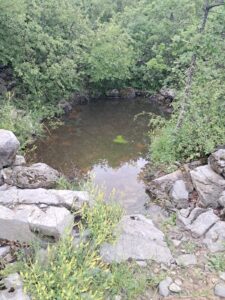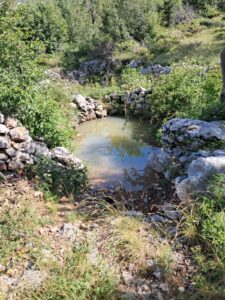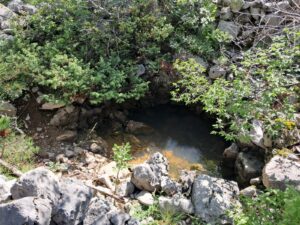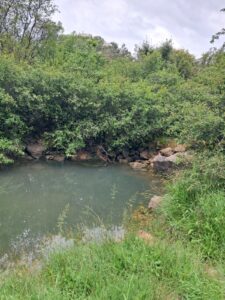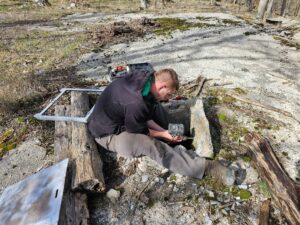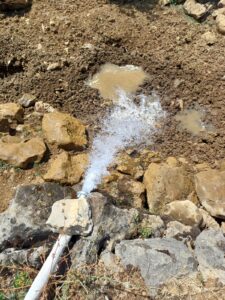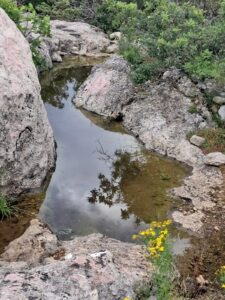Seven years ago, we started restoring water ponds, wells and springs on Velebit, in order to provide a safe source of water for wildlife on this karst terrain. So far, we have renovated or built 30 new water bodies.
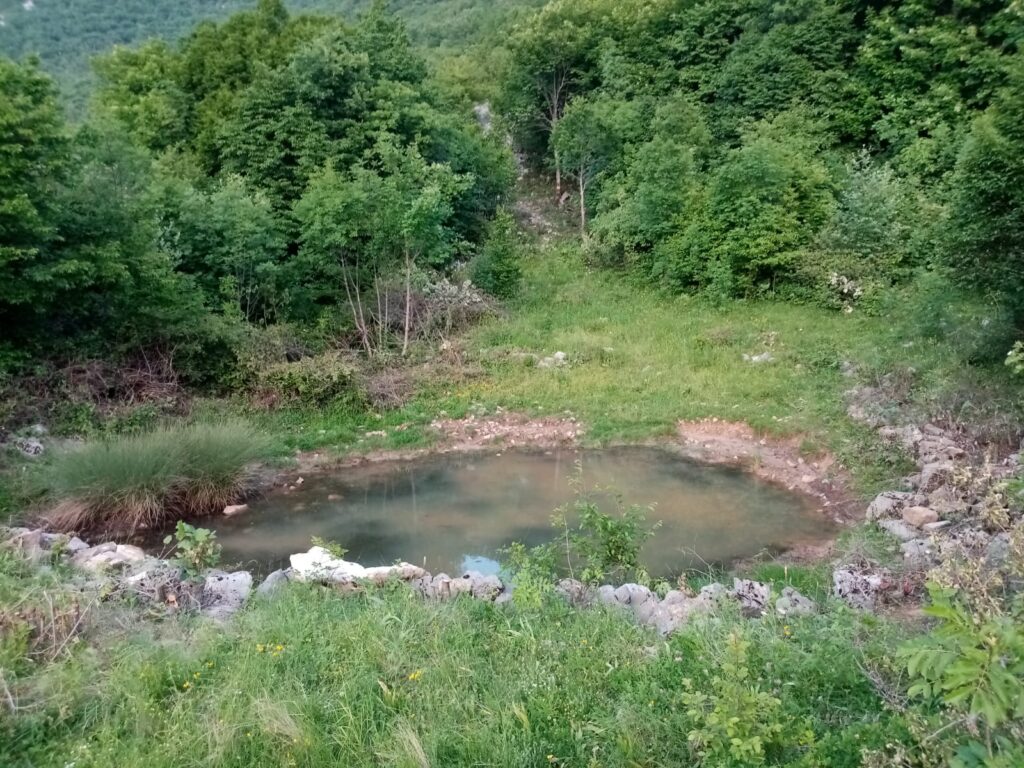
When we look at old geographic maps of Velebit, we can see a multitude of water bodies depicted on them – ponds, springs, wells – spread across the mountain. Every village had them, sometimes even several. Unfortunately, it is a fact that has faded into the past over time, but not irretrievably so.
With depopulation and the loss of husbandry, the need for wells and ponds on Velebit has largely disappeared. Consequently, due to disuse and lack on maintenance, they have started to deteriorate. In times of global warming, the already scarce Velebit springs are gradually drying up, especially on the sunny and hot coastal side of our beloved mountain.
Continuing the coexistence
Wildlife also benefited from springs, wells, and water ponds, since they provided them with safe access to water, on hundreds of sites on Velebit. However, this aspect of human-wildlife coexistence has mostly been lost with people moving away and the loss of livestock. Wells are collapsing since, and water ponds are becoming overgrown and muddy. As wildlife was dependent on these water bodies that were made or maintained by man, it was on the man to reconstruct them. For this purpose, in 2017 we started with the process of reconstruction of existing and installment of new water ponds, as well as reconstruction and securing of wells.
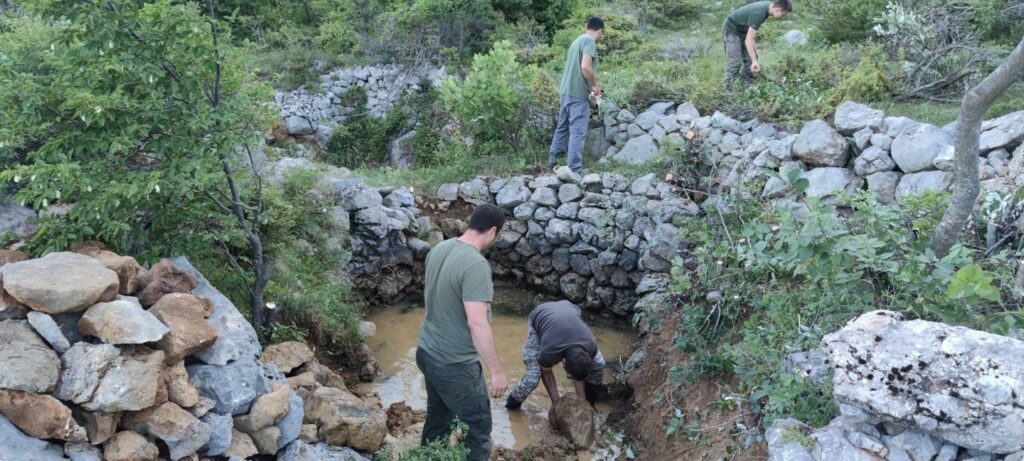
Our first water pond, built seven years ago on Ružne Drage, is still active. In the meantime, we have worked on over 30 water ponds, wells, and spring. These efforts include cleaning, organizing, restoring, securing, or, in the case of ponds, constructing several new ones.
Construction with natural materials
In the restoration and construction of ponds, we take every opportunity to use natural materials – clay and stone. The bottom of the ponds has a water-poor clay layer, whereas the side walls of the pond, if possible, are reinforced with rocks. In choosing sites for new ponds, as it was done in the past, we select natural depressions where water gathers quicker and easier. We also chose remote locations where we found it necessary to install new ponds. With regular removal of branches and mud, these ponds can be a reliable source of water for wildlife for decades, or even longer.
Wells and water tanks that the man has built and took water from it, are quite common on Velebit. However, for wildlife these objects may become hazardous, once the top part, usually a wooden cover, falls apart. If an animal falls into the well of a tank, it cannot get out due to smooth vertical sides. To address this issue, we adapt wells and tanks for wildlife use by building access ramps so that the animals can approach them and drink water, and in the case they fall in they can get out. Some of these objects we have closed and secured from wildlife falling in, in cases where there is a reliable water source somewhere nearby. However, we have left it for amphibians to enter and exit those with a simple and practical solution – a branch.
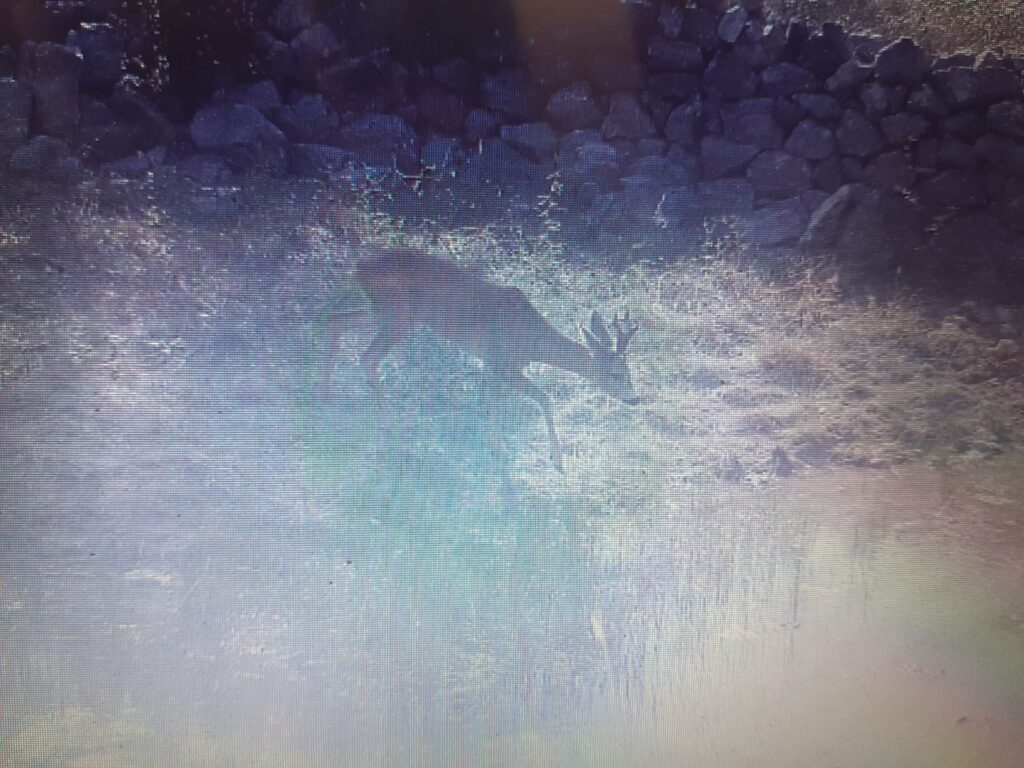
The importance of these water bodies in such an area and under natural conditions such as these in our time is immeasurable. “Smaller aquatic habitats, such as ponds, are important components of biological diversity because they create refuges for wildlife,” emphasizes Marija Krnjajić, the Rewilding Velebit team leader, adding – “Accordingly, our efforts in constructing and maintaining ponds inspire us to develop an ever-greater awareness of the complexity and, perhaps even more, the significance of our natural world.”
From mammals to amphibians
Maintaining and constructing new water bodies is greatly helping the survival of wildlife in the upper and remote parts of Velebit. It also actively contributes to habitat preservation and promotes biodiversity. The presence of big herbivores is helping maintain grasslands, which in return support strong biodiversity, and also this megafauna is a prey for large predators. Velebit, being a karst area, is rich in caves that provide habitat for bats, whereas beautiful insects come from Velebit meadows for their drop of water. Amphibians might be the most endangered group due to their lesser ability to cover great distances in search of water.
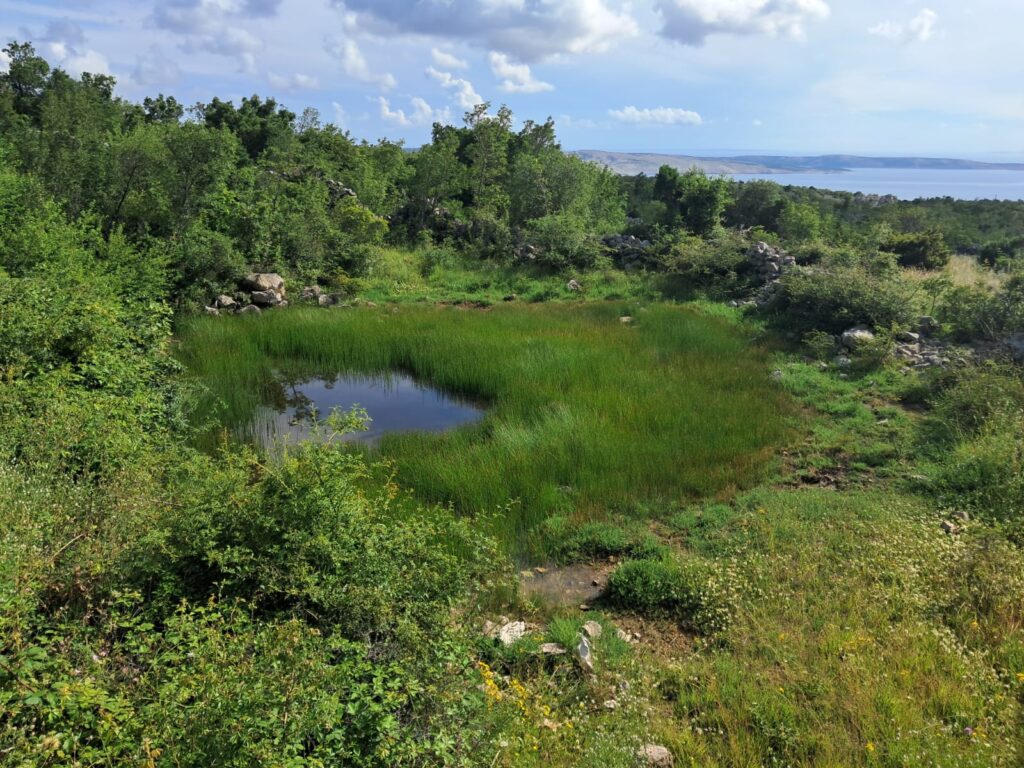
Maintaining existing water bodies and constructing new ones is our ongoing activity. The need for water in karst areas extends of course beyond our rewilding zones, so we started installing new water ponds outside of it. The first such water pond was constructed this spring in Northern Velebit, with more to follow. We commend all organizations and individuals who have been restoring water bodies in Croatian karst mountains, Dalmatia, and Istria for a shorter or longer period. This is crucial in sustaining biodiversity and it is encouraging thought that the geographical map of this area will once again be justifiably covered with blue topographic marks that signify life.
Ramino Korito rewilding area
Ružne Drage – our first and newly constructed water pond in, built in 2017.
Water pond at Trubaja above Vidovac – a completely neglected natural pond enforced by a stone wall; it had dried out and couldn’t keep water anymore. We transported clay and renewed the pond.
Water tank in Šušanj – a ramp was built as an entrance so the wildlife can get in and drink water, and get out, in case they fall in.
Water pond in Konjsko below Vrata Tampaljevca – we renewed the existing village pond and took out stones that have fallen in. In summer we refill it with water brought over by fireman vehicles.
Water pond on Terezijana, the section between Konjsko and Baške Oštarije – cleaned it up and renovated. It was used at the time when carriages used the ancient Terezijana road, but also by village cattle.
Šmrčkova Valley pond – natural and overgrown, full of branches. Cleaned it up, expanded, and put clay at the bottom. There were no shepherd’s huts in the area.
From Takalice location to Sladovača – installed a new pond.
Samari area – installed a new pond; close to it, we placed an info board informing about the importance of ponds.
Jablanac rewilding area
The water pond at Šarnica – renovated, a ramp was built to allow wildlife to enter an exit.
Trolokve – Grabarje area, renovated and expanded the existing pond. A pipe was laid from the road to the pond so it can be refilled.
Bileni well – above Gornji Bileni village, the well was cleaned up; “alkaten” pipe was laid from the road so it could be refilled. Five to 10 cubic meters large.
Rokići below Grabarje – existing pond five to six cubic meters large was renovated.
Two water ponds on Pločinac next to Štokići – cleaning them up every year; both can contain over five cubic meters of water.
Well in Štokići – a ramp was built so that the wildlife could enter and exit.
Maras well – deeped it, and cleaned regularly.
Žutac near Prizna – cleaned up and deepened the well.
Roginka – a well near Magistrala road, a ramp was made so the wildlife can enter and exit.
Well in Zavratnica village – installed a ramp.
Vodnici – cleaning up the pond from mud and plants.
Orlovača – the existing spring was surrounded by stones on two spots so the water is being preserved.
Two ponds next to Perujice below Mliništa – cleaned up.
Two wells in Starčevići – cleaned up paths surrounding it.
Golden well in Baričevska Draga – cleaned up.
A stone spring in Jasenje – cleaned up; in natural rock, contains a cubic meter of water.
Prštetak well – cleaned it up; the name was given by Dragičevići family as they were moving to the upper parts of Velebit.
Crna Duliba – Metla rewilding area
Tomina Duliba – built a ramp on a pond located below the Bijele Stijene area.
Two ponds at Crni Dabar – secured.
Water tank near Dabarsko Jezero – closed it up.
A pond at Stupačinovo – closed.
Water tank at Vrbanske Dulibe – made a cover
Northern Velebit
A new water pond was installed next to the village of Krasno, the first one constructed outside our rewilding area.

